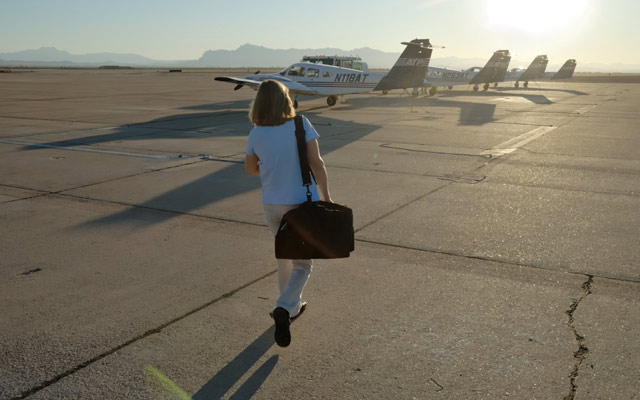With a first solo happily in the books—as many student pilots proudly proclaim on AOPA's Flight Training Facebook page—and several more logged under similar conditions, the day comes when a student pilot solos on a day unlike those of previous flights.
Today there’s an overcast at 5,000 feet, and a bit of wind. Not so unusual, except that the wind is from the "other" direction, the one opposite the airport’s prevailing breezes. That means you will perform your takeoff and landing (or two, or three) way down there at that seldom-used runway end that is mostly foreign even to pilots who have flown here forever.
Don’t underestimate the value of that scenario. The change of pace can deliver some of the same lessons as the cross-countries you will fly later, minus the time and fuel burn of longer flights.
One such lesson shows up when you prepare for the first landing. Landmarks and other cues that help you fly the traffic pattern to the more-familiar runway no longer apply. You must rely solely on your judgment to keep pattern-leg lengths reasonable and maintain correct spacing from the runway.
That effect mimics a cross-country because landing at an unfamiliar airport, with a new and different sight picture in the windscreen, demands more pilot attention to the task of controlling the descent rate on final approach. If you have been receiving guidance from a visual approach slope indicator on the usual runway, its supportive presence may be absent now.
Also, terrain features may require a modified or truncated traffic pattern. That terrain, and trees and buildings, can stir up mechanical turbulence down low.
Speaking of cross-countries, here is another way to maximize the experience provided by your solo flying. For pilots training at many airports, a provision of the regulations offers a workable option by permitting your instructor to authorize solo flights "to another airport that is within 25 nautical miles from the airport where the student pilot normally receives training," if the purpose of the flights is to "practice takeoffs and landings at that other airport." (Review the regulation and its limitations.)
Achieving solo is a landmark achievement, and follow-up solos are an exhilarating confirmation of your progress. Learning also soars, so be sure to take the opportunities your training environment offers to maximize the value of the solo hours that go in your logbook.




